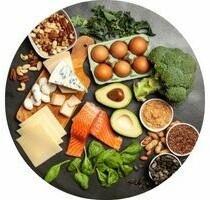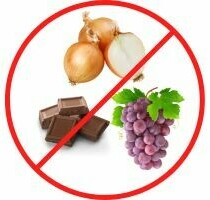
I’ve been asked about healthy training treats for dogs lately, so I’m here to help you understand why choosing the right treats is a game-changer when it comes to dog training. It’s not only about giving your furry companion a little snack; it’s about making a positive impact on their behavior and health. After all, treats are pivotal when using positive reinforcement, a method that supports good behavior by rewarding your dog for a job well done.
So, what sets a ‘healthy’ treat apart? It’s one that’s made with wholesome ingredients that contribute to the wellness of your pooch without compromising taste or excitement. I’ll guide you through the components that make a treat beneficial, like lean proteins, healthy fats, and fibers. Also, I’ll briefly touch upon the noteworthy ingredients you should keep an eye out for on your next shopping trip.
Remember, a healthy treat does more than just appease hunger or incentivize your dog; it serves to nourish their body. Not all treats are created equal, and the best ones are those that contribute to their overall health, boosting everything from their coat condition to their energy levels.
After setting the stage for what defines a nutritious reward, you’re going to find out about the top ingredients to include in your dog’s treats. This knowledge will empower you to make informed decisions, whether you’re scanning the shelves at the pet store or whipping up a batch of homemade goodies.
Top Ingredients for Nutritious Dog Treats

When you’re zeroing in on the best treats to support your dog’s training and overall health, the ingredient list is your best friend. You want to scan it for high-quality, natural components that pack both a nutritional punch and a flavor your dog will go nuts for.
Single-ingredient treats are a stellar starting point. Think lean meats like chicken breast, turkey, or beef liver, which can be dehydrated for a chewy bite. These are straightforward, digestible, and usually a hit with the pooch population.
Next up, let’s chat about protein. Lean and mean is the mantra here. You’re on the lookout for treats that are high in protein but not burdened by excess fat. These can help maintain muscle mass without piling on the pounds. Fish, such as salmon or cod, provides omega fatty acids along with protein, fostering a shiny coat and healthy skin.
Homemade or store-bought? Both can be excellent choices. If you choose to buy, ensure the product states ‘Made with real [insert ingredient]’ and isn’t just flavored that way. For the DIY enthusiasts, rolling up your sleeves can mean full control over what’s going in your dog’s belly.
Lastly, don’t forget fiber. A bit of fiber in treats, often sourced from pumpkin or sweet potato, aids in digestion and helps keep things regular. It might not be glamorous, but a happy gut makes for a happy dog – and a happier you.
Some very popular and healthy store bought treats can be found at Chewy.com.
(This post contains affiliate links and I may make a small commission for qualifying purchases which will not change your price at all)
Preparing Your Own Healthy Dog Treats at Home
I’m going to show you how creating homemade dog treats can be a rewarding experience for both you and your furry friend. Not only can you ensure the quality of the ingredients, but you can tailor each recipe to your dog’s unique taste and health needs.
If you’re eager to balance flavor and nutrition, here’s a simple tip: use lean meats like chicken or turkey, mix in some pumpkin puree for fiber, and add a sprinkle of parsley for fresh breath. Keep an eye on your dog’s reaction to judge the success of your recipe.
We have put together several great homemade treat recipes that can be found here.
Storage is key when it comes to keeping those homemade treats fresh and safe. I recommend using airtight containers and storing them in the fridge or even freezing them for longer shelf life. This way, you can whip up a big batch without worrying about spoilage.
Suppose your dog has food sensitivities or requires a special diet. In that case, homemade treats give you the control to exclude potential allergens and include only those ingredients that will support their health.
Remember, not all treats are created equal. So, in keeping with a ‘safety first’ mindset, the next section will walk you through the do’s and don’ts when rewarding your dog. We’ll cover which ingredients to avoid and how to ensure treats are a healthy part of your dog’s daily intake.
The Do’s and Don’ts of Dog Treats: Safety First
When it comes to rewarding your four-legged friends, your first instinct is to reach for the treats that’ll make their tails wag. But, it’s crucial to keep safety at the forefront of your treat choices. This isn’t just about taste, it’s also about your dog’s wellbeing.

Let’s start with the ‘don’ts’. Some foods which are perfectly safe for humans can be a real no-go for dogs. You’re going to find out about common human foods like chocolate, grapes, and onions that are toxic to dogs. Remember, what works for your diet doesn’t necessarily work for your furry friend.
I’m here to help you with portion sizes too. Over-treating can lead to obesity and health issues, so it’s vital to know how much is just right. You can always adjust your approach down the road, ensuring your dog stays healthy while still enjoying their favorite snacks.
In my opinion, incorporating treats into your dog’s diet should be done thoughtfully. Balance is key. Choose something that resonates with you—maybe it’s a mix of store-bought and homemade treats, or perhaps it’s treats with functional benefits like dental health or joint support.

Lastly, watch your dog’s reaction to new treats. Signs like digestive upset, changes in appetite, or unusual behavior are indicators that the treat might not be a good fit. If you spot these signs, just make sure to consult your vet. Your first attempt doesn’t need to be your last, so don’t worry too much about perfection initially. Start out with very small portions and work your way to what works best for your pup.
In closing, remember that treat giving is about celebrating and enhancing your bond with your dog. It’s an expression of love and an essential part of training. Just don’t focus too much on perfection—what matters is the joy and health you bring into each other’s lives.
If you want to explore more or share your experiences, I’d love to hear your feedback, leave your comments below.


